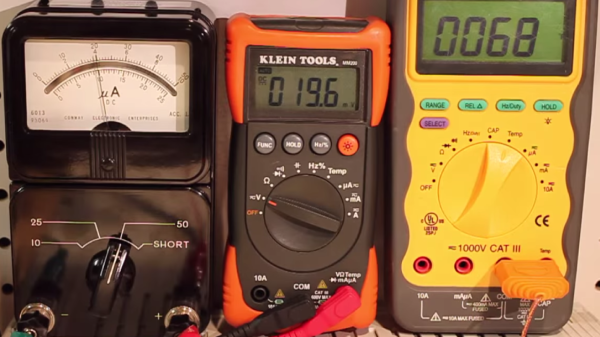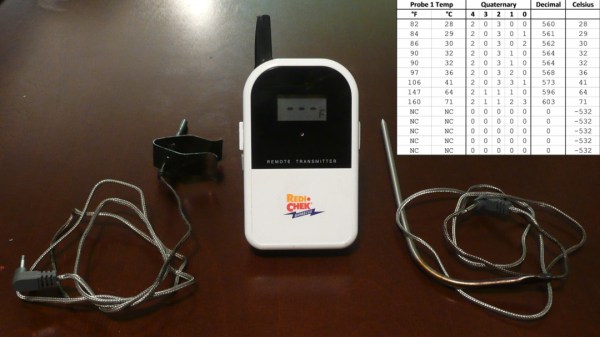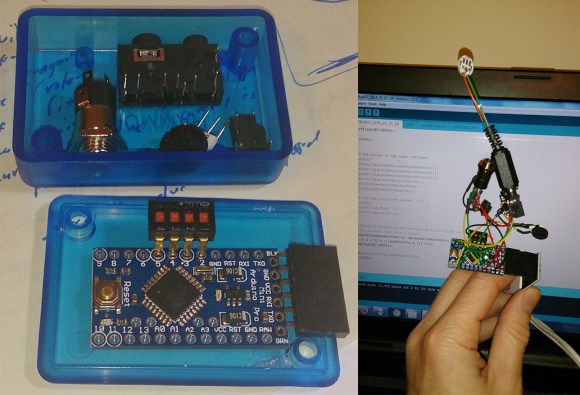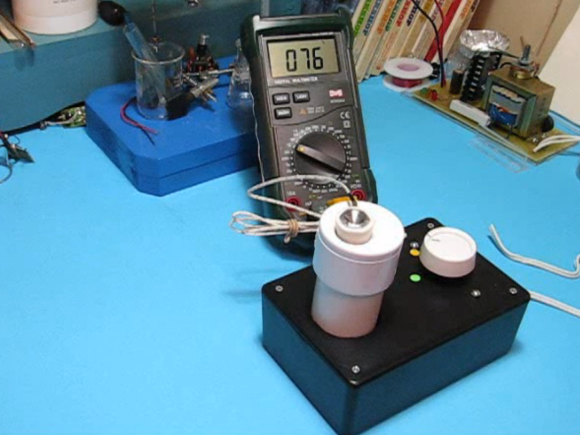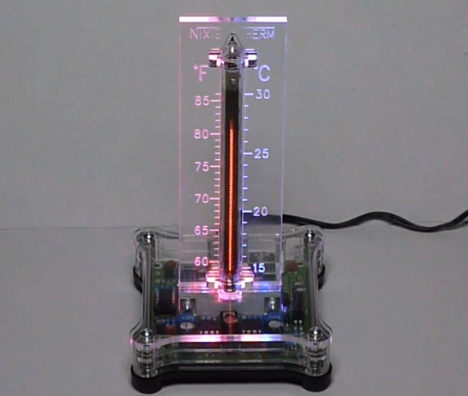[Craig] sent in this tip about a simple hack he built to convert an old analog micro-ammeter into a thermometer using a few parts. There’s a certain charm to retro analog meters, and there was enough space inside the old meter to accommodate the tiny breadboarded circuit and the three AA batteries to convert it into a cool looking centerpiece which is useful too!
He used the 3-pin MCP9700 analog temperature sensor connected to a LTC1541 – a combined comparator, op-amp and band gap reference voltage all rolled into one package. The thermometer displays 1uA per degree Celsius, has an output of 1mV per degree Celsius for external temperature monitoring / data logging, and draws just about 20uA. While the build itself is pretty simple, [Craig] took the time to walk through every design decision he made in the video after the break. This starts with the design for his circuit, and moves on to the selection of parts and their values. The video is a must-watch for anyone wanting to learn more about precision op-amp based designs.
The three batteries will drain over time, and a circuit like this one requires a stable reference voltage. That is taken care by the bandgap reference voltage from the LTC1541. This eliminates the use of additional voltage regulators, and allows the circuit to work from 4.5V down to about 3.3V. Check the video after the break to listen to [Craig] describe how it works. We’re not sure how quickly it responds to changes in ambient temperature since the sensor is enclosed inside the meter, so maybe some vents at the back, or bringing out the sensor might be a good idea.
Continue reading “Vintage Microammeter Now Tells Temperature”

